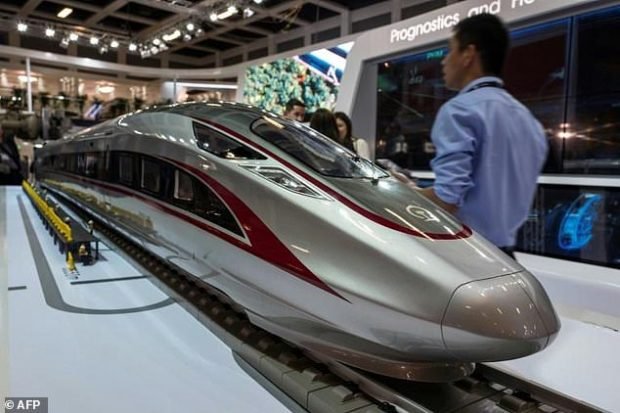California’s High-Speed Rail Isn’t Built, But It Is Putting Money In Unions’

Democratic officials are throwing billions at California high-speed rail projects that have yet to be built, funding thousands of jobs specifically for union members.
Despite funding initially being approved by a referendum in 2008, the California High-Speed Rail project currently has less than a quarter of its expected length under construction and was initially supposed to have connected Los Angeles and San Francisco by 2020, according to The Los Angeles Times. The Los Angeles/Orange Counties Building and Construction Trades Council, which represents 48 local unions and more than 150,000 members in California, boasted of the creation of 13,000 unionized construction jobs due to continued funding of California’s high-speed rail project.
The California High-Speed Rail Authority, in its community benefits agreement regarding the construction of the rail, lays out that it will exclusively bargain with union representatives for craft labor and that no employee will be required to join a union, but workers who are at the site for more than eight total days will be required to pay union dues. The agreement outlines that union members will be the primary source of labor and that the local unions will be given the opportunity to refer employees for the job.
“The project has been a windfall for the union workers who’ve been on the job,” Kerry Jackson, William Clement fellow in California Reform at the Pacific Research Institute, told the DCNF. “By some counts, as many as 13,000 have been hired. The California High-Speed Rail Authority itself even brags about the ‘steady union jobs that provide union wages and benefits’ they get. That’s not to mention the benefits the union bosses everywhere always enjoy when they have more dues-paying members supporting their salaries and perks.”
The Biden administration announced $3 billion in federal funds for the project in December to push along the first phase of the project connecting Merced, Fresno and Bakersfield, adding to the $9 billion already appropriated by the state and the around $3.5 billion in grants given by the Obama administration. The project has been estimated to need between $88 billion and $128 billion to be fully completed, and the rail authority told the DCNF that it is aiming to be operational from Bakersfield to Merced between 2030 and 2033.
“Of course, project costs are affected by higher, non-market wages,” Jackson told the DCNF. “When you have so many workers making these wages over the years, it adds up. The unions are a force behind the rail and one of the reasons, if not the main one, that this project has not been halted even though it’s far behind schedule, way over initial cost projections, and looks like a failed enterprise. The community benefits agreement that serves as the project labor agreement requires unions to be the primary source of all craft labor.”
The California High-Speed Rail Authority told the DCNF that, so far, 22.5 miles in the Central Valley have reached substantial completion, but that efforts are underway to design stations and track systems, complete environmental reviews and procure trains.
“The project is very much happening and continuing to make progress with our commitment unwavering as we remain active and aggressive in moving the project forward while actively pursuing federal funding,” the Authority told the DCNF.
Big News: Today, President Biden announced funding to build the first high-speed rail projects in our nation’s history.
These investments will get people and goods where they need to go more quickly, reduce emissions, increase passenger safety, and create good-paying union jobs. pic.twitter.com/zxR6SQawIw
— The White House (@WhiteHouse) December 9, 2023
“Even if we didn’t have the project labor agreement, there would be prevailing wage and benefits on this project, both because of state requirements and federal funding requirements,” Anne-Marie Otey, communications and editorial director at the LA/OC Building and Construction Trades Council, told the DCNF. “So they’d be there no matter what, so we might as well make the best of it. I think it is better for the workers when there’s also a union agreement on the project.”
Otey pointed to the Davis-Bacon Act, which is a federal law that requires the government to pay at least the local rate to workers when constructing public projects, as the reason why using union workers on the project would not raise labor costs. The Congressional Budget Office estimated that if the Davis-Bacon Act were repealed in 2020, it would have reduced government spending outlays by $10.7 billion by 2030.
“It’s benefiting workers,” Otey told the DCNF. “And these workers are represented by unions, but no, we didn’t look at it as ‘What can we do for unions?’ We said, ‘What can we do for workers in the state?’ Especially again, in areas like the Central Valley, where they can’t just drive to San…
Read More: California’s High-Speed Rail Isn’t Built, But It Is Putting Money In Unions’

